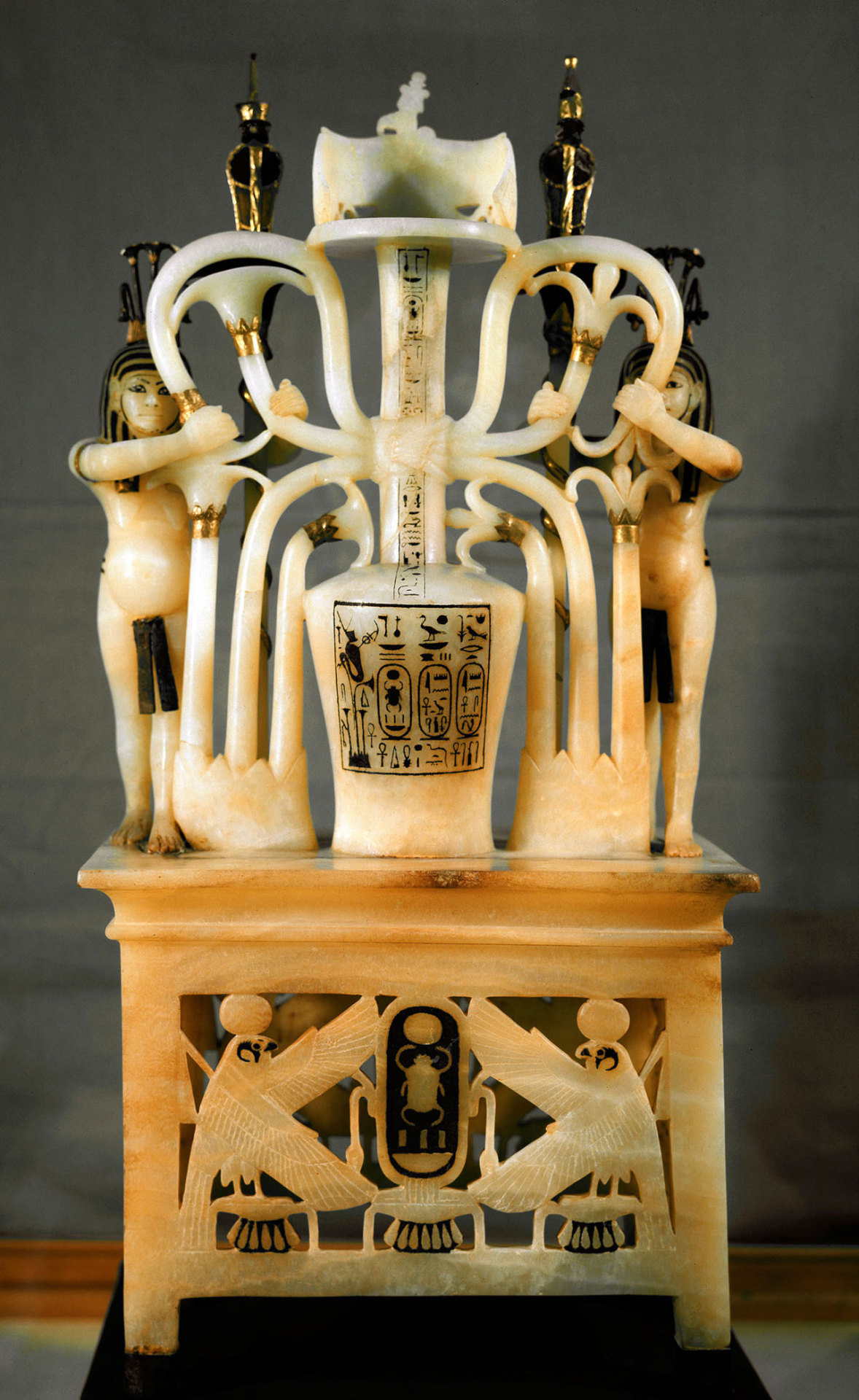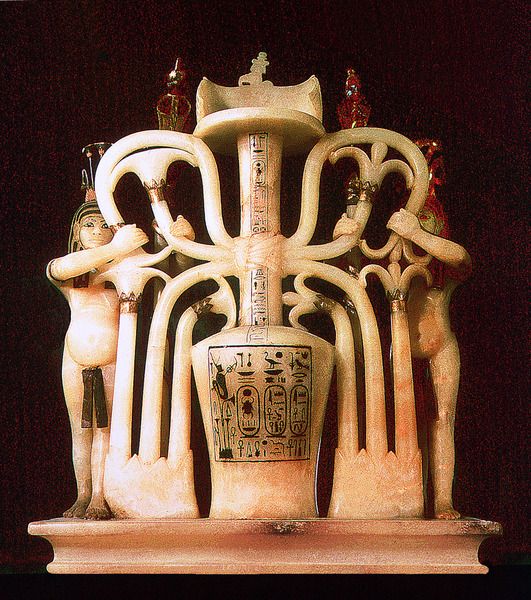Among the breathtaking treasures discovered in the tomb of Tutankhamun, the alabaster perfume vase holds a special place as a testament to the artistic and cultural achievements of ancient Egypt. Crafted in the 14th century BCE, this vessel represents the New Kingdom’s unparalleled artistry and sheds light on the profound significance of aromatic substances in the daily and spiritual lives of the Egyptians.
The Craftsmanship of the Vase
This perfume vase, fashioned from translucent alabaster, exemplifies the meticulous craftsmanship of ancient Egyptian artisans. Alabaster, a prized material, was chosen not only for its durability but also for its luminous quality, which evokes a sense of purity and divinity. The vase’s smooth contours and intricate design reflect a dual purpose: aesthetic refinement and practical utility. The material’s ability to preserve oils and perfumes over time further underscores its role as a vessel for valuable contents.

Cultural and Ritual Significance
Perfumes and aromatic oils were integral to the fabric of ancient Egyptian life. These substances were not merely luxury items but held profound cultural and religious importance. In daily life, they were used for personal grooming, signifying status and refinement. In religious contexts, aromatic oils were considered offerings to the gods, connecting the physical and divine realms.

In funerary practices, perfumes played a pivotal role. The alabaster vase from Tutankhamun’s tomb likely contained precious oils intended to accompany the young pharaoh into the afterlife. Ancient Egyptians believed these substances could provide comfort, protection, and purification, ensuring a seamless transition to eternity.
Symbolism and Artistic Legacy
The alabaster perfume vase is not merely functional but also symbolic. Similar vessels often feature inscriptions or motifs, such as floral patterns or representations of deities, emphasizing the link between their contents and divine offerings. Although this specific vase lacks detailed records of its original contents, its inclusion among Tutankhamun’s burial treasures highlights its importance in reflecting royal luxury and ritual practice.

Moreover, this artifact demonstrates the Egyptians’ understanding of aesthetics and practicality. Its design strikes a perfect balance between beauty and purpose, embodying the sophistication of New Kingdom artisans.
A Timeless Artifact
Today, the alabaster perfume vase continues to captivate scholars and visitors alike. As an enduring symbol of ancient Egyptian elegance, it offers a tangible connection to a civilization that valued artistry, spirituality, and luxury in equal measure.
Conclusion
The alabaster perfume vase from Tutankhamun’s tomb is more than an exquisite artifact; it is a gateway to understanding the spiritual and cultural intricacies of ancient Egypt. Over 3,000 years after its creation, this object invites us to reflect on the profound interplay between art, utility, and belief in one of history’s most fascinating civilizations.

